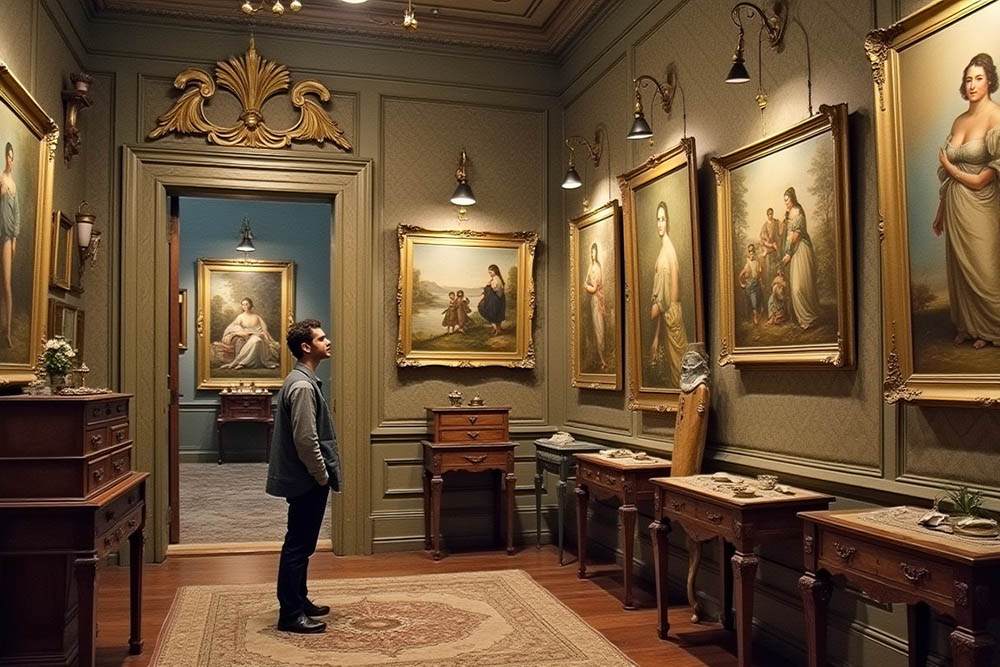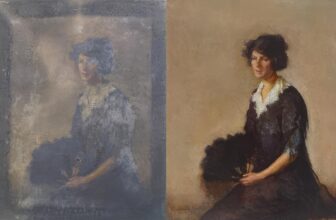
Investing in Fine Art: A Complete Guide to Building Wealth Through Creativity
Fine art has long been associated with prestige, culture, and wealth. But beyond its aesthetic and cultural value, art has also become a viable investment asset class. From Old Master paintings to cutting-edge digital NFTs, art has transformed from a passion-driven collectible into a serious portfolio diversifier.
This article provides a deep, comprehensive guide on investing in fine art, exploring its history, market dynamics, risks, rewards, and strategies. By the end, you’ll understand why fine art is gaining traction among investors, how to enter the market, and what to consider before making your first acquisition.
What Is Fine Art Investment?
Fine art investment is the practice of purchasing artwork, paintings, sculptures, photography, or digital art, with the goal of generating long-term financial returns. Unlike decorative art or mass-produced prints, fine art typically refers to unique, original, or limited-edition works that hold historical, cultural, or market value.
Unlike traditional investments such as stocks or real estate, art has both tangible and intangible value:
Tangible: The physical artwork you can display or store.
Intangible: Prestige, cultural significance, and emotional connection.
This duality makes art unique: you don’t just own an asset, you own a piece of human creativity.
A Brief History of Art as an Investment
Art as a financial asset is not new. Wealthy patrons in Renaissance Europe commissioned works from artists like Michelangelo and da Vinci, often as status symbols. Over centuries, collectors and royal families accumulated art, passing it down as intergenerational wealth.
In the 20th century, art collecting became more democratized. Figures like Peggy Guggenheim and Gertrude Stein helped establish the modern art market, supporting now-legendary artists like Picasso and Jackson Pollock.
By the 1980s and 1990s, art auctions at Christie’s and Sotheby’s were attracting hedge fund managers and billionaires, turning masterpieces into multi-million-dollar financial assets.
Today, the rise of fractional art investment platforms and art funds means investors don’t need millions to participate. Technology and globalization have expanded accessibility like never before.
Why Invest in Fine Art?
1. Portfolio Diversification
Art has historically shown a low correlation with traditional markets like stocks and bonds. When equities decline, fine art can remain resilient, offering stability in turbulent times.
2. Hedge Against Inflation
High-quality artworks tend to appreciate in value over time, often outpacing inflation. This makes them a store of value similar to gold or real estate.
3. Strong Historical Returns
According to the Artprice Global Index, blue-chip art has averaged annual returns of 5–8% over the past 20 years. Some works have sold for exponentially more than their purchase price.
4. Prestige and Enjoyment
Unlike stocks or crypto, art can be displayed, admired, and experienced. It provides cultural enrichment along with financial benefits.
5. Growing Global Demand
The art market has become increasingly globalized, with growing interest from Asia, the Middle East, and emerging economies. This expands potential buyer pools and strengthens demand.
Risks of Investing in Fine Art
While art can be rewarding, it is not without challenges. Investors should consider:
Illiquidity – Selling art can take months or years, unlike stocks that trade instantly.
Valuation Uncertainty – Unlike real estate comps or stock earnings, art pricing is subjective. Value depends on reputation, provenance, and demand.
High Transaction Costs – Auction houses and galleries charge fees ranging from 10–25%.
Forgery and Fraud Risks – Authenticity verification is critical; the market has seen numerous scandals.
Storage and Insurance – Art requires climate-controlled environments, professional handling, and insurance, adding costs.
Concentration Risk – A single artwork is a concentrated investment; diversification is harder compared to ETFs or mutual funds.
Understanding these risks is essential before allocating serious capital.
How the Fine Art Market Works
The art market operates in two main segments:
Primary Market
Where artworks are sold for the first time, usually through galleries, directly from artists, or exhibitions.
Prices are influenced by the artist’s reputation, gallery prestige, and critical reception.
Secondary Market
Where artworks are resold, primarily through auctions or private dealers.
Prices depend heavily on demand, rarity, and previous auction history.
Major auction houses like Christie’s, Sotheby’s, and Phillips dominate the high-end market, while online platforms and smaller dealers cater to mid-tier collectors.
Types of Fine Art Investments
Not all art is created equal from an investment standpoint. Here are the main categories:
1. Blue-Chip Art
Works by established, world-renowned artists (Picasso, Monet, Warhol).
Considered stable, with predictable demand.
High entry point (millions of dollars), but strong resale value.
2. Emerging Artists
Early-career or mid-career artists gaining traction.
Higher risk but potentially higher reward if their career takes off.
Entry prices are more accessible ($5,000–$100,000).
3. Contemporary Art
Works created by living artists.
Currently the fastest-growing sector, often driven by global collectors and institutions.
4. Old Masters
Works by European artists before 1800 (Rembrandt, Caravaggio).
Historically prestigious, but demand has declined compared to contemporary works.
5. Photography and Prints
More affordable entry point.
Limited editions can hold long-term value if the artist is established.
6. Digital Art & NFTs
Blockchain-based ownership of digital works.
Highly speculative but has created new wealth opportunities (e.g., Beeple’s $69M sale at Christie’s in 2021).
Strategies for Investing in Fine Art
1. Buy and Hold
Long-term strategy of acquiring high-quality works and holding them for decades. Best suited for blue-chip art.
2. Emerging Artist Investing
Seek out rising stars before they break into the mainstream. Riskier but can yield outsized returns.
3. Diversification
Build a collection across categories (blue-chip, contemporary, digital) to spread risk.
4. Fractional Ownership
Platforms like Masterworks allow investors to purchase shares in multi-million-dollar artworks, lowering barriers to entry.
5. Art Funds
Professional funds that pool capital to acquire art portfolios. Managed by experts, but often with high fees and limited transparency.
6. Art-Backed Lending
Investors can borrow against their art collections as collateral, providing liquidity without selling.
How to Start Investing in Fine Art
Step 1: Research
Study the market, artists, and auction results. Resources like Artprice, Artnet, and Sotheby’s databases provide valuable insights.
Step 2: Define Your Budget
Decide how much you are willing to invest. Entry points can range from a few thousand dollars to millions.
Step 3: Choose Your Market Segment
Decide whether you want blue-chip stability, emerging artist risk-reward, or fractional platforms.
Step 4: Work with Experts
Consult galleries, art advisors, or auction specialists. Their expertise helps avoid costly mistakes.
Step 5: Verify Authenticity
Ensure artworks have proper provenance, certificates of authenticity, and appraisal documentation.
Step 6: Plan for Storage & Insurance
Factor in ongoing costs for secure storage and protection.
Step 7: Diversify and Monitor
Build a collection strategically and track how your pieces perform at auctions and in market reports.
Tax Considerations in Art Investment
Capital Gains Tax: Profits from selling art are subject to capital gains, often at a higher collectible tax rate in some jurisdictions.
Estate Planning: Art can be used for wealth transfer, philanthropy, or charitable deductions.
Depreciation: Unlike real estate, art cannot be depreciated for tax benefits.
Consult a tax advisor who specializes in art transactions before making large investments.
The Role of Technology in Fine Art Investing
Digital innovation has disrupted traditional art markets in several ways:
Online Marketplaces: Platforms like Artsy and Saatchi Art make buying accessible worldwide.
Blockchain: Verifies provenance, combats forgery, and enables digital art ownership.
AI Tools: Predictive analytics help forecast artist performance and pricing trends.
Fractional Platforms: Allow investors to participate in multi-million-dollar artworks without full ownership.
This democratization of access has drawn a new generation of millennial and Gen Z investors.
Case Studies of Successful Art Investments
Jean-Michel Basquiat – A painting bought for $19,000 in 1984 sold for $110.5 million in 2017.
Claude Monet’s Meules – Purchased for $2.5 million in 1986, resold for $110.7 million in 2019.
Beeple’s NFT – Digital artist Beeple’s “Everydays: The First 5000 Days” sold for $69 million at Christie’s, marking a turning point in digital art.
These examples illustrate both the potential upside and the unpredictability of the art market.
Tips for Beginners
Start small: consider photography, limited prints, or fractional shares.
Focus on passion: buy what you genuinely appreciate, not just what you hope will appreciate in value.
Follow art fairs and biennials to spot trends.
Network with galleries and other collectors.
Avoid “hot hype” markets unless you’re prepared for volatility.
The Future of Fine Art Investing
Several trends are shaping the next decade of art investment:
Sustainability and Ethical Collecting – Greater emphasis on supporting diverse artists and environmentally sustainable practices.
Digital Art Expansion – NFTs and blockchain authentication will continue to evolve.
Globalization of Demand – Growing interest from Asia, Africa, and Latin America will reshape the market.
Fractional Investing – More accessibility for everyday investors.
Institutional Participation – Hedge funds and private equity are increasingly exploring art as an alternative asset.
The market is poised for continued growth, though volatility remains part of its DNA.
Investing in fine art is a blend of passion, culture, and finance. While it carries risks such as illiquidity and valuation uncertainty, it also offers strong historical returns, diversification benefits, and the unique joy of owning timeless creativity.
Whether you choose to buy a masterpiece, discover an emerging artist, or invest fractionally, the key is research, patience, and strategic decision-making. With global demand rising and technology reshaping accessibility, fine art investment is no longer reserved for the ultra-wealthy, it’s becoming a legitimate option for investors of all backgrounds.




